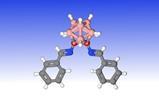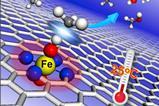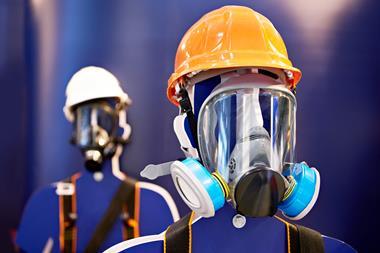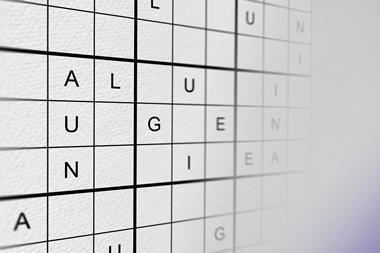Accidental poisonings in the US have risen dramatically during the Covid-19 lockdown. They are up 20% in the first three months of 2020 compared with last year, according to the Centers for Disease Control and Prevention (CDC). There were 45,550 calls related to exposure to disinfectant and cleaning agents, almost two-thirds of the incidents involving bleach and most of the others non-alcohol disinfectants and hand sanitisers. Often problems have arisen when people unwittingly or inadvertently mix different kinds of cleaning agents.
What potentially hazardous cleaning products are out there?
It’s a dirty job, but someone’s got to do it. Disinfecting, bleaching, wiping down – it might seem simple but if a job’s worth doing, it’s worth doing well. And during this time of heightened anxiety about Covid-19 with increasing attempts to clean and disinfect everything around us, making sure you get it right when using cleaning products has become more important than ever.
The chemical industry can help with this. Countless products exist to clean surfaces and equipment to maintain hygiene, reduce the risk of disease and help eradicate unpleasant odours.
Bleach
There are many cleaning products referred to as ‘bleach’. They usually contain an aqueous solution of sodium hypochlorite (NaOCl) at various concentrations with added surfactants, anti-foaming agents and fragrances. Bleach is corrosive and can damage skin and eyes and be lethal if ingested.
Ammonia
Ammonia (NH3) is also used in aqueous solution at 5% to 10% concentrations. It is widely used to clean glass, porcelain and stainless steel, as well as removing fatty deposits from ovens. It is corrosive and toxic.
Sodium hydroxide
Solid sodium hydroxide, caustic soda and solutions of this basic chemical are widely used to break down fatty deposits in ovens and drains. It is corrosive and can damage the skin and eyes if it comes into contact with them or if the fumes are inhaled.
Hydrochloric, nitric and phosphoric acids
Acids are less common in domestic cleaning agents but are used in commercial ones. However, solutions of two or more acids are also sold as sprays for bathroom cleaning to cut the need for scrubbing. They are both corrosive and toxic.
As always, it’s important to read the information on the label on proper use of these chemicals.
So, what’s the problem?
If used correctly and separately each is effective at its job, although many of them are corrosive and toxic on their own. Mix them – something emergency services have recently been warning people not to do to tackle coronavirus – and they will not be as effective and could even lead to tragic consequences.
Products usually list ingredients, highlight risks and warn against mixing. Nevertheless, there have been several high-profile cases recently where two or more common cleaning agents have been mixed with serious consequences. Statistics show that there are several thousand unwitting accidents of this kind every year in the UK alone.
Recent examples of mixing cleaning agents resulted in generation of toxic fumes and led to hospitalisations and fatalities. One incident saw the tragic death of a restaurant manager in the US, after he mopped a floor with a strong bleach solution unaware of an earlier spillage of a strong acidic cleaning agent – the mix generated lethal quantities of chlorine in the enclosed space. Another recent incident resulted from a woman in the US sterilising groceries with a mixture of bleach and vinegar – chlorine is thought to have been generated. She was hospitalised with breathing difficulties but recovered.
What’s the chemistry at play when cleaning products are mixed?
The chemistry of ill-defined mixes of the various cleaners – acids, ammonia, hypochlorite and hydroxides – is complicated. Part of the problem is that mixing often generates a lot of gas and heat, which may rupture or burn sealed containers. There is also the issue of decomposition that occurs spontaneously in normal use and prior to any deliberate or inadvertent mixing of cleaning agents. Such decomposition can generate species such as hypochlorous acid (HOCl) that can then feed additional reactions with other cleaning products.
Bleach decomposition depends on storage conditions and use; it decomposes in sunlight, on heating, on contact with metals, as well as producing tiny concentrations of chlorine without any trigger.
NaOCl + H2O → NaOH + HOCl
2HOCl → 2HCl + O2
The hydrochloric acid can itself react with hypochlorite to form small amounts of chlorine
NaOCl + 2HCl → Cl2 + NaCl + H2O
Chlorine gas is toxic, forms acids on contact with wet surfaces, such as home plumbing but also living tissue, such as the lungs.
Heating or contact with metals can also cause bleach to decompose via a different route.
2NaOCl → O2 + 2NaCl
Mixing hypochlorite with ammonia would see the breakdown of the hypochlorite to generate hypochlorous acid and thence hydrochloric acid. This will then react with more hypochlorite to release chlorine gas, hazardous in itself but then further reacting with ammonia to generate corrosive and toxic chloramines (R2NCl). The distinctive smell of swimming pools is the result of hypochlorite reacting with nitrogen compounds found in sweat and urine to generate volatile organic chloramines.
In the gas phase we might see this reaction:
2NH3 + Cl2 → NH2Cl + NH4Cl
In solution, the more likely reaction is:
NH3 + NaOCl → NH2Cl + NaOH
If the ammonia is particularly concentrated then this can lead to the formation of hydrazine (N2H4), whose toxic vapours are explosive in air and can cause burns and eye damage. Fortunately, this reaction is less likely to occur in the domestic environment because it requires an excess of ammonia and a temperature of at least 125°C.
2NH3 + NaOCl → N2H4 + NaCl + H2O
There is also the risk of generating chloroform if bleach is mixed with products containing alcohol. The reaction is very complicated, but can be simplified to:
CH3CH2OH + 4NaOCl + 2NaCl + H2O → 2CHCl3 + 6NaOH
Mixing acid and bleach will also generate the strong oxidising agent hypochlorous acid, which will further react with hypochlorite to generate chlorine gas. This is an equilibrium reaction the balance of which depends on the acidity of the solution:
NaOCl + 2HCl → Cl2 + NaCl + H2O ↔ NaCl + HOCl
We might assume that a hydroxide solution will react with an acid in a conventional way to generate water and a salt. But in concentrated form, rapid mixing generates a lot of heat and fumes, which could contain chlorine or chlorine-containing gases depending on the acid.
What to do if you accidentally mix cleaning products?
The first signs of incompatibility between cleaning products could be a hissing noise, vapours, heat and bubbling, explains Olga Kuzmina, faculty safety manager at Imperial College London. If the volume of the mixture is small, it is advisable to immediately dilute the mixture by adding copious amount of water, she adds. Ensure increased ventilation if possible or leave the location to avoid breathing in the vapour. Wait until the visible signs of any reaction are gone and clean up the remaining liquid wearing gloves and dispose of the wastes down the drain. If there is any sign that the reaction is still taking place add more water but do not try to neutralise the mixture with other chemicals. However, if the cleaning products are reacting in high volumes and in difficult to access locations such as deep in sink’s pipes, then the advice may be somewhat different.
The basic advice is to evacuate the area, says Robert Geller, medical director at the Georgia Poison Center. If safe to do so, he adds, open windows and start externally venting extractor fans. A call to the emergency services should be made and emergency care for severe symptoms sought. Specific advice from a poison centre should be sought for mild symptoms if they do not subside after a few minutes in fresh air. Of course, there are specific rules and protocols in laboratories where other hazardous chemicals might be involved and ventilating may not be advisable.
Additional reactions and advice provided by Olga Kuzmina.




















1 Reader's comment